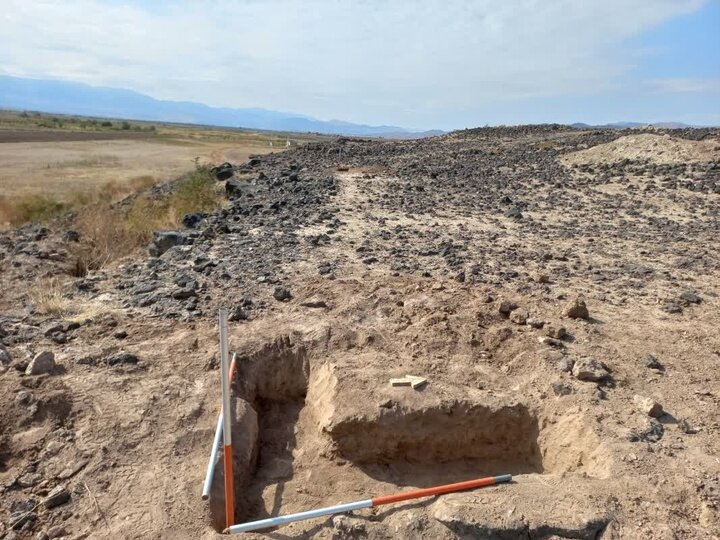Archaeological work sheds new light on ruins believed to date from Urartu epoch in northwest Iran

TEHRAN – A team of archaeologists in northwest Iran has unearthed parts of a ruined fortress, which is estimated to date from the Kingdom of Urartu, an Iron Age realm once extended over the modern frontiers of Turkey, Iran, Iraq, and Armenia.
“In this project, some pieces of evidence and clues about the fort’s external architecture have been revealed,” a local tourism official said on Thursday.
The official said if the archaeological excavation project continues, the fortress can be turned into an open-air museum to be visited by travelers and sightseers.
The eight-day excavation of the site has just finished under the leadership of the archaeologist Hassan Salak-Akbari, the official said.
“The project was conducted by experts from the Faculty of Archaeology at Hamedan’s Bu-Ali Sina University.”
The fort is located on a hill named Qareh-Tappeh which can be found in Poldasht county of West Azarbaijan province.
Earlier this year, Dr. Erkan Konyar, a professor of archeology at Istanbul University, delivered a lecture on Urartian settlements in northwest Iran.
Addressing a host of archaeologists, historians, and cultural heritage enthusiasts at the National Museum of Iran, Konyar emphasized the importance of northwest Iran in the Urartu kingdom and said: To the east of the Van Lake Basin, behind the northern Zagros Mountains, lies the Urmia Lake Basin, which contains the important plains and the Lake Urmia.
In his lecture titled “The Urartian Capital Tushpa and the Urartian Settlements in Northwest Iran”, Konyar discussed the capital of the Urartu, Tushpa, and its explorations, as well as its comparison with the Urartu settlements in the northwest of Iran.
Centered in the mountainous region southeast of the Black Sea and southwest of the Caspian Sea, the Urartu kingdom rose to power in the mid-9th century BC, but it went into a steady decline and was ultimately conquered by the Iranian Medes in the early 6th century BC. Later, Urartians were succeeded in the area in the 6th century BC by the Armenians.
As mentioned in Assyrian sources, the kingdom enjoyed considerable political power in West Asia in the 9th and 8th centuries BC.
Archeological finds concerning the Kingdom of Urartu in modern Iran include ruined fortresses, settlements, water constructions, rock chambers, graves, and rock-carved inscriptions.
AFM
